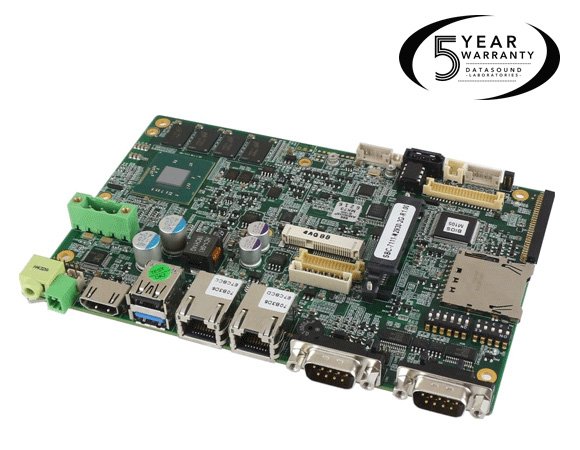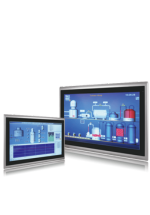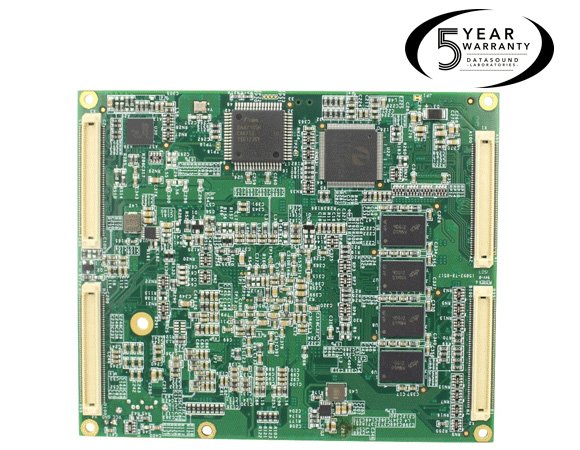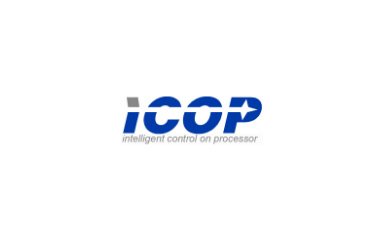 What if processing power, memory, and connectivity could all be combined on a simple machine? Introducing the single board computer. Also known as an SBC, this is a complete computer system designed on a single, physical circuit board. As you’d expect, this makes them compact in size. And as such, they only include what is absolutely essential for a computer – memory, microprocessor/system on a chip, input/output (I/O), a certain amount of RAM, among them. Some might also have cooling elements built in too, as well as other peripheral outputs like ethernet and USB ports. When it comes to an SBC, think small, powerful, and relatively straight forward.
What if processing power, memory, and connectivity could all be combined on a simple machine? Introducing the single board computer. Also known as an SBC, this is a complete computer system designed on a single, physical circuit board. As you’d expect, this makes them compact in size. And as such, they only include what is absolutely essential for a computer – memory, microprocessor/system on a chip, input/output (I/O), a certain amount of RAM, among them. Some might also have cooling elements built in too, as well as other peripheral outputs like ethernet and USB ports. When it comes to an SBC, think small, powerful, and relatively straight forward.
What are Single Board Computers Used For?
SBC’s simple design makes them particularly reliable, and this means they’re well suited to certain tasks. You’ll often find them embedded computer controllers that are used for complex device operation. Anything that requires ‘always-on’ tasks – also known continuously running processes – are particularly well suited to SBCs.
Other examples and use cases for single board computers include traffic signals, braking and safety systems in cars and other vehicles, embedded industrial systems, robotics, mobile phones, games consoles, drones, media streaming, and web browsing. Basically, any situation or need that requires simplicity, compactness, and low power consumption. As you can see, SBCs are extremely versatile, as they’re used across a wide range of both industrial and consumer applications.
Single Board Computers vs. Motherboards
Although simple in its design, a SBC is not another type of circuit board. And by this same definition, single board computers are not the same as motherboards, even though both are key parts of different computer systems.
The purpose of a motherboard is to act as the foundation for a desktop or server system. This provides a framework for assembling a full computer. They are frequently combined with other components to build a working computer system that is suited to certain requirements. It may have sockets, connectors, and expansion slots for a variety of parts, including the CPU, RAM, storage devices, and expansion cards. SBCs, on the other hand, have a single board that houses only the necessary parts. There’s no space for additional components and to build upon them. They’re far simpler than motherboards.
Why Use a Single Board Computer?
Single board computers offer a wide range of benefits that can be used in all sorts of industrial environments and use cases. Primarily, industrial single-board computers are designed specifically to be used in challenging conditions. Like other industrial computers, they have industrial-grade connectors, robust components, and resistance to vibrations, dust, humidity, and temperature changes. If you work in manufacturing, transportation, or industrial automation, a single board computer could enhance your operations.
But why a single board computer specifically, rather than an alternative industrial model? SBCs are small and compact, making it simple to integrate them into a variety of settings – particularly applications with limited space. SBCs are easy to integrate into existing systems and equipment. They frequently provide a range of connectivity choices and interfaces, including Ethernet and USB host ports. Single board computers are used in a variety of industries and are highly adaptable, and are easy to customise to meet particular project needs.
SBCs are also much more energy-efficient than conventional desktop computers or server systems, as they use far less electricity. This can really affect the bottom line. Their small size means they don’t get as hot as larger computers, so overheating is less of a concern. If you have a need that requires an easy-to-integrate, low-running cost computer, this may be a solid option.
Finally, single board computers also have a straightforward design with only a few components. As such, they’re considerably resilient with a reduced risk of hardware problems. In the long term this also means they have a pretty solid lifespan, making them a reliable investment.
To Sum Up
Single circuit computers feature all of the necessary components of a complete computer system in a compact machine. Whilst they may not have the same complexity as other computing systems, their small and self-contained design makes them well suited to a whole host of use cases. Especially those in need of a computer that is energy efficient, simple to use, and highly dependable in a harsh industrial setting.





